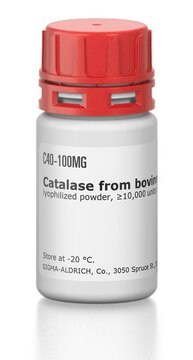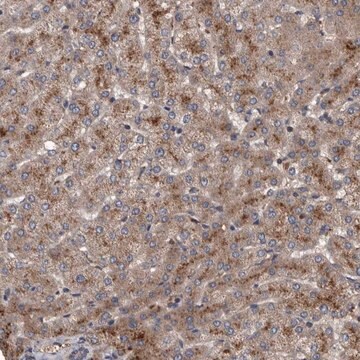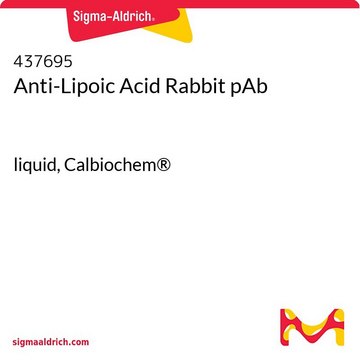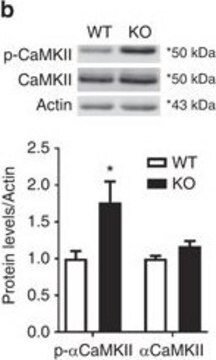ABT1346
Anti-Bikunin (CP6)
serum, from rabbit
Synonim(y):
Protein AMBP, alpha-1-microglobulin/bikunin precursor, Inter-alpha-trypsin inhibitor light chain, ITI-LC, Bikunin, EDC1, HI-30, Uronic-acid-rich protein
About This Item
Polecane produkty
pochodzenie biologiczne
rabbit
Poziom jakości
forma przeciwciała
serum
rodzaj przeciwciała
primary antibodies
klon
polyclonal
reaktywność gatunkowa
human, mouse
reaktywność gatunkowa (przewidywana na podstawie homologii)
porcine (based on 100% sequence homology), camel (based on 100% sequence homology), nonhuman primates (based on 100% sequence homology), feline (based on 100% sequence homology)
metody
western blot: suitable
numer dostępu NCBI
numer dostępu UniProt
Warunki transportu
ambient
docelowa modyfikacja potranslacyjna
unmodified
informacje o genach
human ... AMBP(259)
Opis ogólny
Specyficzność
Immunogen
Zastosowanie
Cell Structure
Western Blotting Analysis: A representative lot detected ~132 kDa Pre-IαI (PαI, bikunin·HC3) in murine airway epithelial cell (AEC) lysate (Abbadi, A., et al. (2015). J. Biol. Chem. 291(3):1448-1455).
Western Blotting Analysis: A representative lot detected ~37 kDa human urine bikunin, as well as the in vitro generated ~125 kDa PαI (bikunin·HC3) by TNF-stimulated gene 6-/TSG-6-catalyzed transfer of a single heavy chain (HC) from mouse serum to the glycosaminoglycan of bikunin using either human urine or purified human urine bikunin (Lamkin, E., et al. (2015). J. Biol. Chem. 290(8):5156-5166).
Immunohistochemistry Analysis: A representative lot localized bikunin immunoreactivity in 10% formalin-fixed (48 h), 5% EDTA-decalcified (14 days), paraffin-embedded human femoral condylar cartilage sections (Yoshihara, Y., et al. (2008). Osteoarthritis Cartilage. 16(11):1343-1355).
Jakość
Western Blotting Analysis: A 1:500 dilution of this antiserum detected bikunin immunoreactive bands (IαI & PαI) in 44.8 µg of mouse serum proteins.
Opis wartości docelowych
Postać fizyczna
Przechowywanie i stabilność
Handling Recommendations: Upon receipt and prior to removing the cap, centrifuge the vial and gently mix the solution. Aliquot into microcentrifuge tubes and store at -20°C. Avoid repeated freeze/thaw cycles, which may damage IgG and affect product performance.
Inne uwagi
Oświadczenie o zrzeczeniu się odpowiedzialności
Nie możesz znaleźć właściwego produktu?
Wypróbuj nasz Narzędzie selektora produktów.
Kod klasy składowania
12 - Non Combustible Liquids
Klasa zagrożenia wodnego (WGK)
WGK 1
Temperatura zapłonu (°F)
Not applicable
Temperatura zapłonu (°C)
Not applicable
Certyfikaty analizy (CoA)
Poszukaj Certyfikaty analizy (CoA), wpisując numer partii/serii produktów. Numery serii i partii można znaleźć na etykiecie produktu po słowach „seria” lub „partia”.
Masz już ten produkt?
Dokumenty związane z niedawno zakupionymi produktami zostały zamieszczone w Bibliotece dokumentów.
Nasz zespół naukowców ma doświadczenie we wszystkich obszarach badań, w tym w naukach przyrodniczych, materiałoznawstwie, syntezie chemicznej, chromatografii, analityce i wielu innych dziedzinach.
Skontaktuj się z zespołem ds. pomocy technicznej








